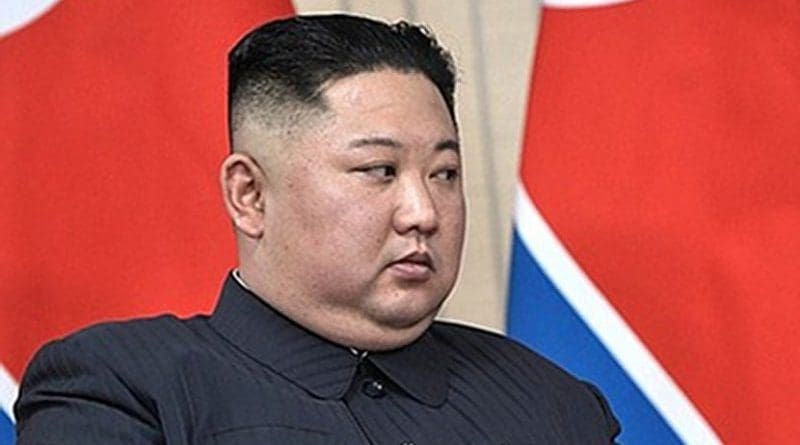Escaping North Korea Under Kim Jong-Un – Analysis
By Jay Song*
As of September 2021, data from the South Korean Ministry of Reunification suggest that 33,800 North Korean defectors currently live in South Korea. This number has soared over the past two decades — before 1998, they numbered under 200.
Following the collapse of the Soviet bloc and the devastating famine in North Korea in the mid-1990s, the turn of the century saw an influx of North Korean arrivals into South Korea rise each year, reaching its peak in 2009 at 2914. Since Kim Jong-un took power in 2012, the flow has largely stagnated and decreased, with COVID-19 reaching an all-time low.
Following Kim’s succession, annual arrivals have not exceeded 1600. In 2020, with increased border restrictions due to COVID-19, only 229 entrants were recorded. A number of factors explain this. The first is strengthened border control between North Korea and China. In the 1990s and 2000s, there were few barbed wire barricades across the exit route of choice, the Tuman river separating both countries. But under Kim’s regime, both China and North Korea have heightened border security with more fences and checkpoints.
Increased social surveillance practices in China have also amplified the challenges facing defectors once they enter. In 2012, with China amending border laws affecting North Korean defectors, efforts to locate them have increased. Without official identification, it is extremely difficult to move around China without attracting suspicion. The adoption of AI-driven face recognition CCTV systems and other systems of social control have further restricted the mobility of defectors hoping to avoid detection. If they are caught and repatriated, there are detrimental consequences, individually and for their families.
Gender disparity across the North Korean migrants in South Korea is another clear dimension. From 2002, women have comprised 75 to 85 per cent of defectors in South Korea. This is a product of social norms in North Korean society. While all men in North Korea must complete at least 10 years of military service, women with middle or high school education are enlisted only between the ages of 17 and 22. Women are relatively more mobile and are more commonly involved in entrepreneurial and informal trading activities across the Chinese border. This likewise exposes women and children to increased risks of human trafficking, and many were sold as wives or cheap domestic labour during the famine and post-famine periods.
Changes in South Korean entry requirements for verifying the identity of self-claimed North Korean refugees is another challenge. These changes are attributed to fears of North Korean espionage and the propensity of Korean-Chinese to enter South Korea falsely claiming defector status to receive government subsidies and more favourable work and residence rights than those of other foreign migrants. The South Korean government also changed the scale and nature of various subsidy schemes for North Korean defectors. Instead of outright cash payments, it now provides incentives that are tied to education, training and employment for long-term settlement and capacity building.
Fees for brokering services to cross borders via land, sea or air have also increased dramatically. In the 2000s, fees per person were around US$3–4000. Now they have skyrocketed to US$20,000. The air route has become largely inaccessible as faking Chinese passports is almost impossible. This has significantly restricted the number of individuals who can afford to leave.
Despite the barriers, North Koreans still have significant motivation for defecting. According to the 2020 survey by the Hana Foundation, the biggest driver for leaving North Korea was the food shortage, followed by political repression, a better environment for families, family reunion, economic opportunities, secondary family migration, personal security and recommendation from others. Family-related motivations have become a dominant pull factor for North Korean migration to South Korea under Kim.
Life satisfaction levels among North Korean migrants in South Korea are moderately high. Male defectors identify South Korea’s competitive society as a main source of unhappiness, while women attribute life dissatisfaction to family separation. One in five North Koreans have experienced discrimination in South Korea. Teenagers commonly point to their low-income status, while older North Koreans attribute this to incompatible skillsets compared to their South Korean peers.
Some North Koreans prefer to undertake onward migration to Western countries. According to the United Nations Office of the High Commissioner for Refugees, the top destination countries for North Korean asylum applications in the past 10 years were Canada, the United Kingdom, Belgium, Russia and the Netherlands. Despite their strong human rights campaigns against North Korea, the United States has not accepted many North Korean refugees.
Migration in contexts like these elsewhere around the world is characterised by natural selection for survival. North Koreans are not unique in this respect. Humans have always tried to move to new locations where more freedom, safety and a higher quality of life are available. Families and social networks play key roles in facilitating and reality the choice for mobility. States have likewise always sought to control people’s inbound and outbound movements, especially in times of crisis.
For ordinary North Koreans life proceeds from crisis to crisis, rooted in patterns that stem back to the Korean War. As North Korea tightens border restrictions to prioritise regime survival — a strategy compounded by pervasive restrictions in neighbouring countries due to COVID-19 — most of its citizens simply seeking to survive will continue to face an uphill battle.
*About the author: Jay Song is Korea Foundation Senior Lecturer in Korean Studies at the Asia Institute in the University of Melbourne. This work is funded by the Academy of Korean Studies.
Source: This article was published by East Asia Forum. A version of this article appears in the most recent edition of East Asia Forum Quarterly, ‘The Korean Way’, Vol 13, No 4.

